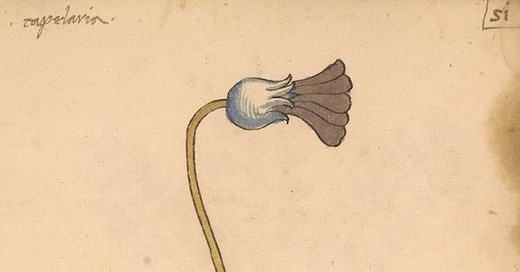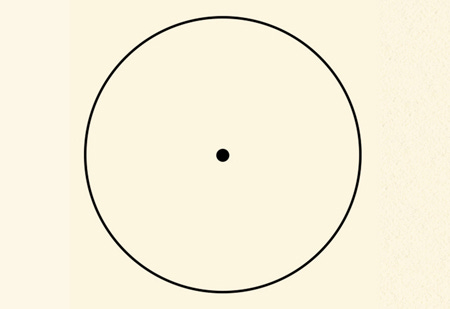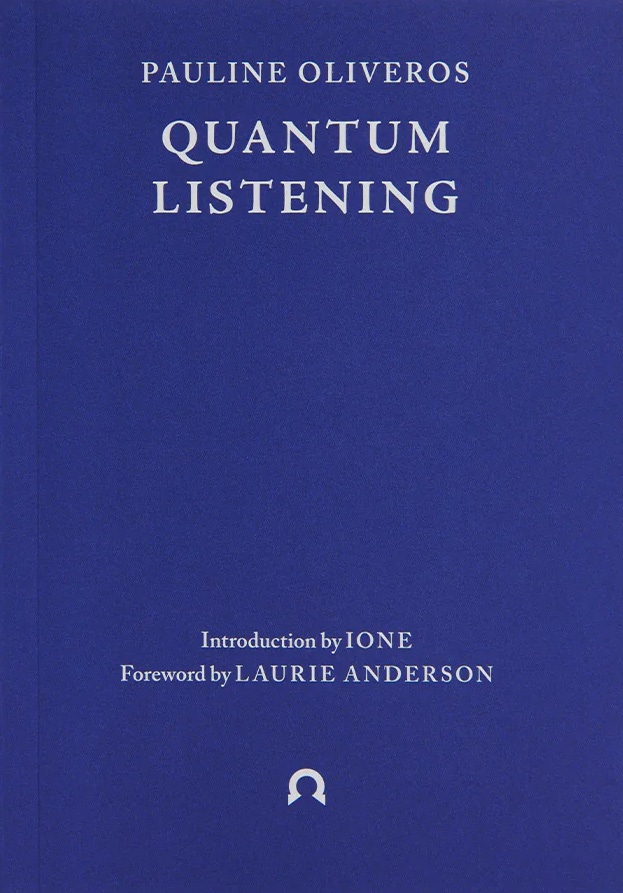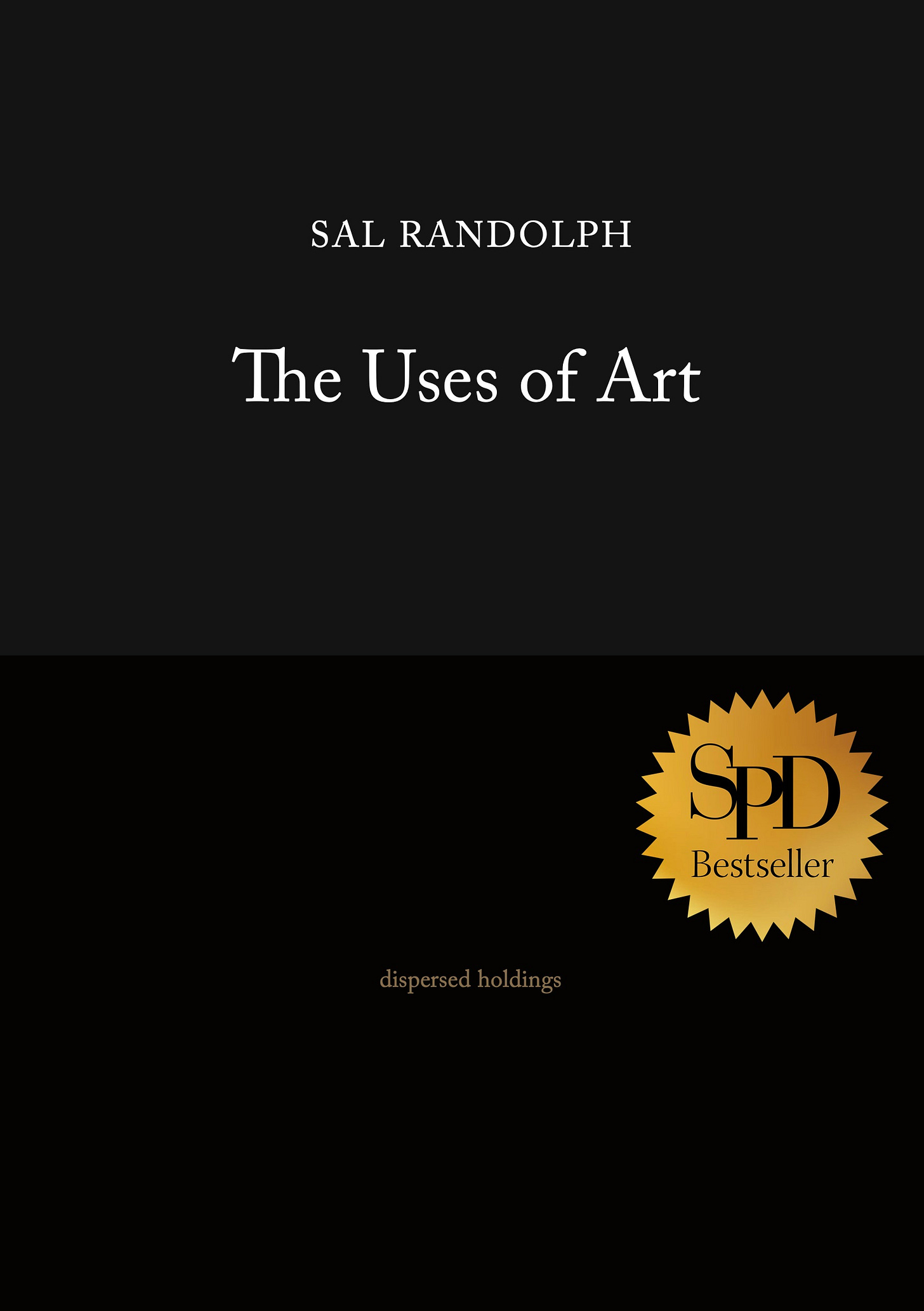
Dear Friends,
I’ve been inspired by the Deep Listening practices of Pauline Oliveros for many years. Oliveros was a composer who invented new forms she called “sonic meditations”— works that could be created or performed by anyone, whether or not they had musical training. These compositions were centered on the act of listening and many are expressed as simple or poetic instructions. One of my favorite is “Take a walk at night. Walk so silently that your feet become ears.”
In her writings and workshops Oliveros made the distinction between hearing and listening. Hearing is the reception of sound, but listening requires the active engagement of attention. Listening goes beyond sonic vibration to include memory, emotion. The ear hears, but the full self listens.
In her work and life, Oliveros aspired to a continuous state of listening, one that went on even in dreams. She says, “My practice is to listen to everything all the time, and remind myself when I am not listening.”
For me, this kind of active listening is an always-available form of refreshment to my state of being. Shifting my awareness from sight to sound brings me immediately into the present moment and its continually changing qualities.
It may seem strange to take listening as a way of seeing, to “listen” to a work of visual art, but I invite you to try the experiment. Let me know what you discover.
— Sal
Deep Listening
Pauline Oliveros defines Deep Listening this way:
Deep Listening is listening in every possible way to everything possible to hear no matter what you are doing. Such intense listening includes the sounds of daily life, of nature, or one's own thoughts as well as musical sounds…. Deep Listening represents a heightened state of awareness and connects to all that there is.
She points to two modes of listening, focal and global — Deep Listening is a balancing, where both modes are actively engaged.
What is heard is changed by listening and changes the listener[.] I call this the 'listening effect' or how we process what we hear. Two modes of listening are available — focal and global. When both modes are utilized and balanced there is connection with all that there is. Focal listening garners detail from any sound and global listening brings expansion through the whole field of sound.
In her book Software for People, Oliveros used a circle with a dot at the center to symbolize the relation of attention and awareness.
The dot represents attention, and the circle, awareness. In these respective positions, each is centered in relation to the other. Awareness can expand without losing center or its balanced relationship with attention, and simultaneously become more inclusive. Attention can be focused as fine as possible in any direction, and can probe all aspects of awareness without losing its balanced relationship to awareness.
For Oliveros, listening is an ongoing and continuous process of attunement between self and world. In her 1999 essay, “Quantum Listening: From Practice to Theory (To Practice Practice),” she suggests that this form of listening, practiced at all times, can shift your relationship with everything.
For me Deep Listening is a life long practice. The more I listen the more I learn to listen. Deep Listening involves going below the surface of what is heard, expanding to the whole field of sound while finding focus. This is the way to connect with the acoustic environment, all that inhabits it. and all that there is. […] The key to multi-level existence is Deep Listening — listening in as many ways as possible to everything that can possibly be heard all of the time. Deep Listening is exploring the relationships among any and all sounds whether natural or technological, intended or unintended, real, remembered or imaginary. Thought is included.
Quotes are from “On Sonic Meditation” in Software for People and “Quantum Listening: From Practice to Theory (To Practice Practice)” from the Center for Deep Listening.
Exercise: Deep Listening
How to listen to a work of art? How to listen to something ostensibly silent? There are two approaches offered here. The First is to enter the imaginary world of the work and find what sounds are there. The other is to practice deep listening in whatever space you find yourself in, letting what you discover guide and alter your experience of the work.
Pauline Oliveros viewed Deep Listening as a form of meditation. Her workshops and retreats began with body warmups and breath work. Even in a public space it can be helpful to take a moment to become aware of your body and posture, and to take a few deep breaths before beginning.
As with all of these “Ways of Seeing,” the initiating impulse is to expand our possibilities for engaging with works of art and deepening attention. These exercises are perfect for time spent in museums, galleries, and studios. You can also bring them into the rest of your life and experiment with streets, libraries, parties, landscapes. Try them as writing or art-making prompts.
These practices work best if you give them some time, at least twenty minutes or a half-hour. This is easier to do if you set a timer.
Interpret these instructions freely and intuitively
Listening to the work: Place yourself in relation to a work of art. Let yourself become still and quiet. Take deep breaths and let them out. Once you feel still, give your attention to the work and begin listening to it. Let your awareness and imagination enter the world of the work. Discover sounds that cannot be heard with the ears. Travel with these sounds into memory and imagination.
Listening to everything: Place yourself in relation to a work of art. Let yourself become still and quiet. Take deep breaths and let them out. Once you feel still, begin to listen to the space you are in. Listen actively and let your awareness travel to discover the tiniest sounds, the most distant sounds, the sounds of your body. You are in a field of sonic vibrations and so is the work of art. Let the music of all that you perceive affect your relation to the work. What vibrates between you?
Share your results and reflections in the comments. I’d love to hear from you.
Pauline Oliveros
Pauline Oliveros has written a number of books including Software for People and Deep Listening: A Composer’s Sound Practice. A new book, Quantum Listening, is available for pre-order from Ignota.
Pauline Oliveros speaking on “The Difference Between Hearing and Listening.”
Further adventures and new ways of seeing can be found in my book, The Uses of Art.
Artist Sal Randolph’s THE USES OF ART is a memoir of transformative encounters with works of art, inviting readers into new methods of looking that are both liberating and emboldening.
Dazzlingly original, ferociously intelligent.
— Michael Cunningham
A joyful, dazzling treasure-box of a book.
— Bonnie Friedman
Here’s a guide, to waking up, over and over again.
— Roshi Pat Enkyo O’Hara








Sal we are so on the same page… all your stuff just knocks me out - but I am so deep into my own weird processes that I’m going to have to wait til later to read it all. Maybe I’ll do a lecture series based on your book… it’s a thought… and you could make guest appearances…
oh yes!